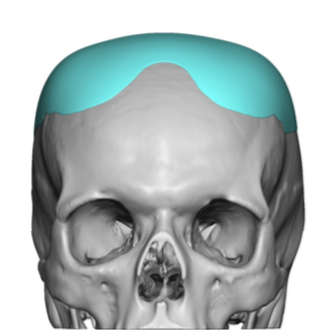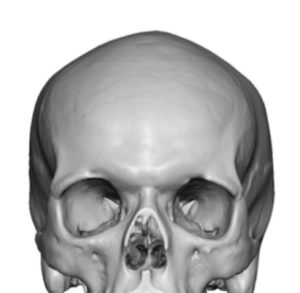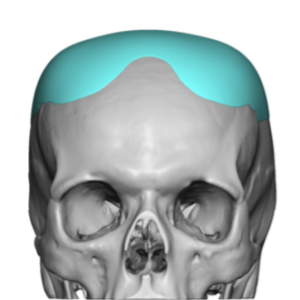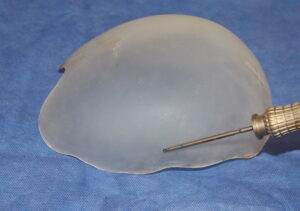Background: The shape of the head in the front view usually has a near half circle shape. While the original sagittal suture line may be the highest point of the skull it should gradually go to the sides (parasagittal region) into the temporal region with a very gradual slope. For women this head shape may be fine while for men they may desire a less round and more square shape. (higher temporal lines)
When the midline sagittal ridge is the distinct high point of the head with the parasagittal region sharply fading away from it, this creates the inverted V head shape. When this undesired head shape is significant it could be due to an isolated high sagittal ridge, an abnormally low parasagittal/temporal lines or, most commonly, a combination of both. The fundamental correction of this head shape requires augmentation of the parasagittal/temporal region which often includes the upper upper parietal region (crown) as well. Think of this as a horseshoe-shaped skull deformity. Whether the sagittal ridge needs some reduction or not requires preoperative computer imaging to determine. That would also be important information in making the custom skull implant design as well.
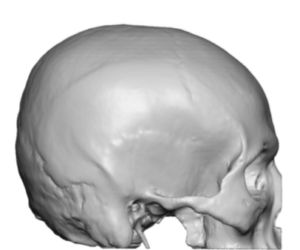
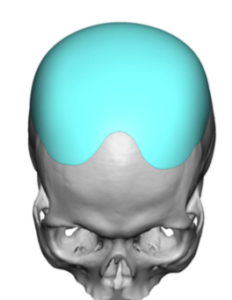
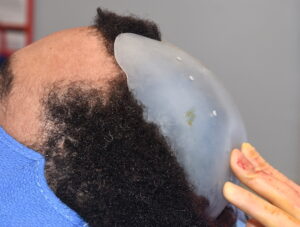
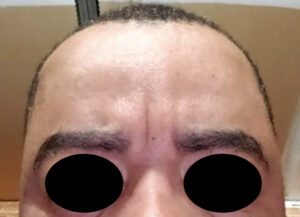
When adding to the parasagittal region of the skull it is important to make sure that it extends far enough past the bony temporal line to to have an unnatural shape. As a parasagittal deficiency also means an upper temporal deficiency as well.
Case Highlights:
1) The high peaked skull shape often consists of a sagittal ridge which appears too high in the midline (apparent sagittal crest) with a more prominent bilateral parasagittal deficiency.
2) The peaked skull shape is often associated with a crown of the head skull deficiency as well.
3) A custom skull implant can take a peaked head shape to a rounder or even a square shape if the patient desires.
Dr. Barry Eppley
Indianapolis, Indiana

